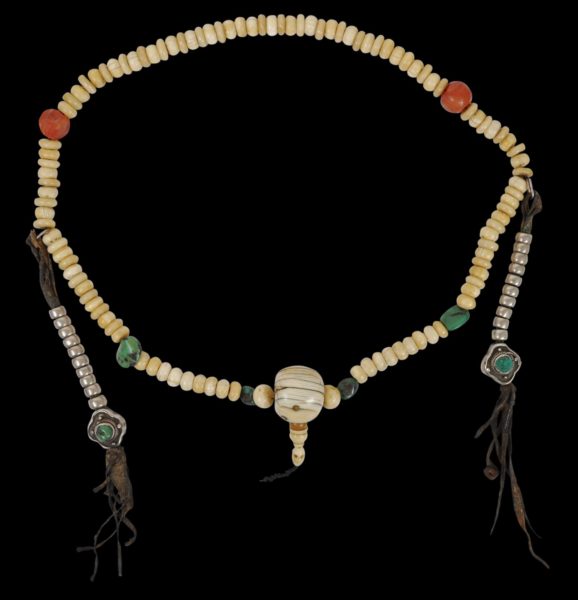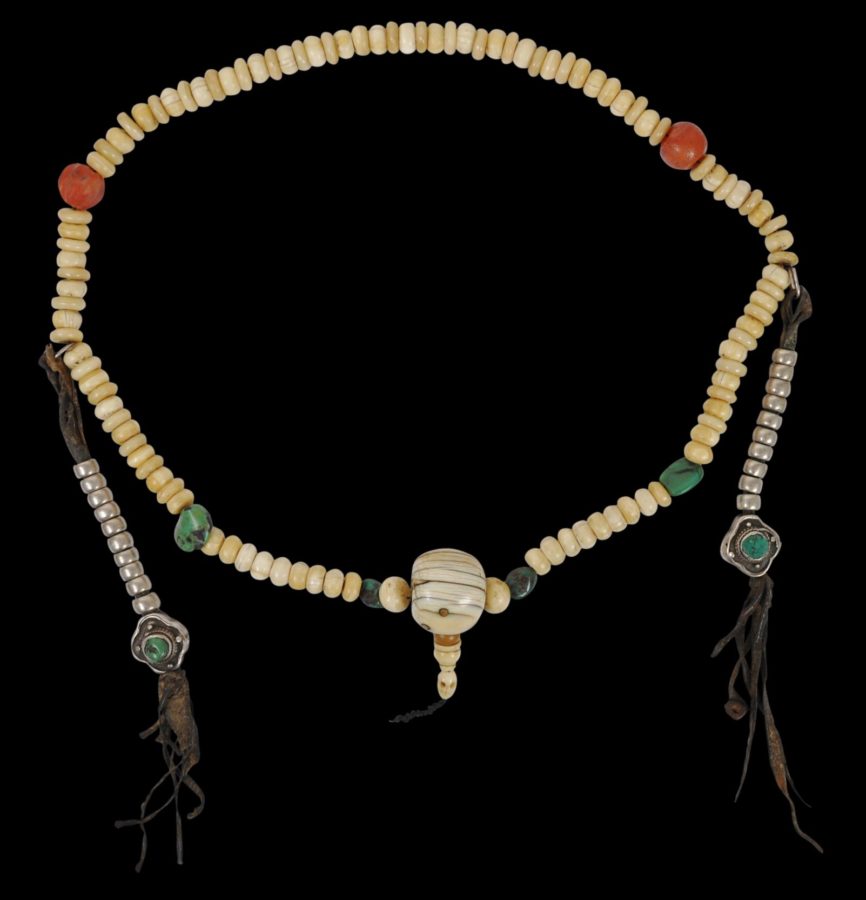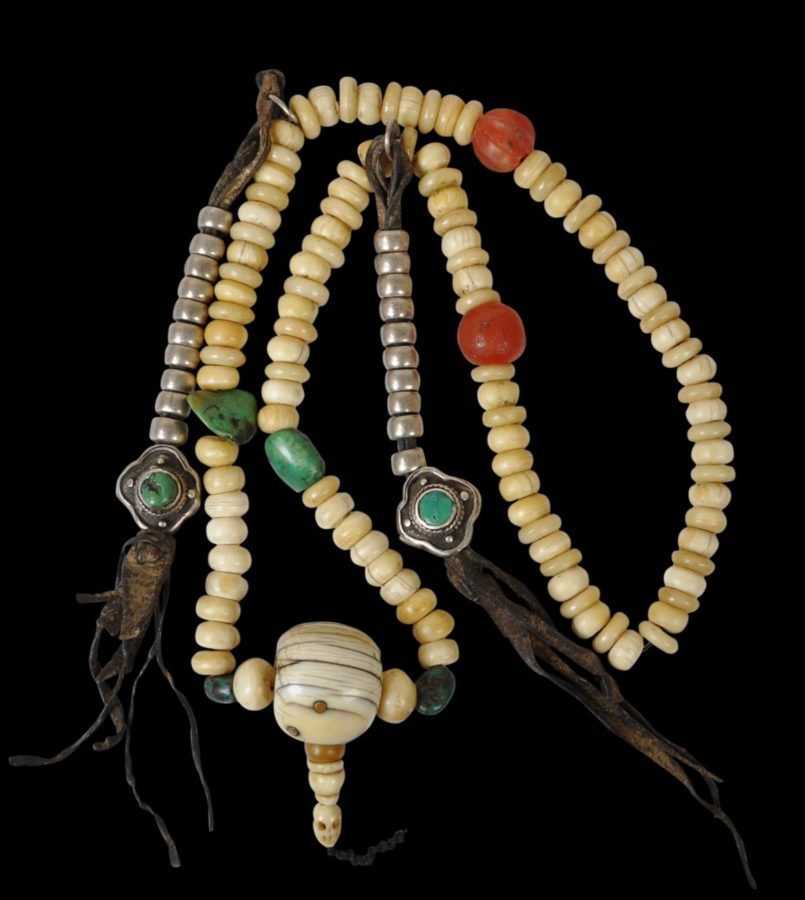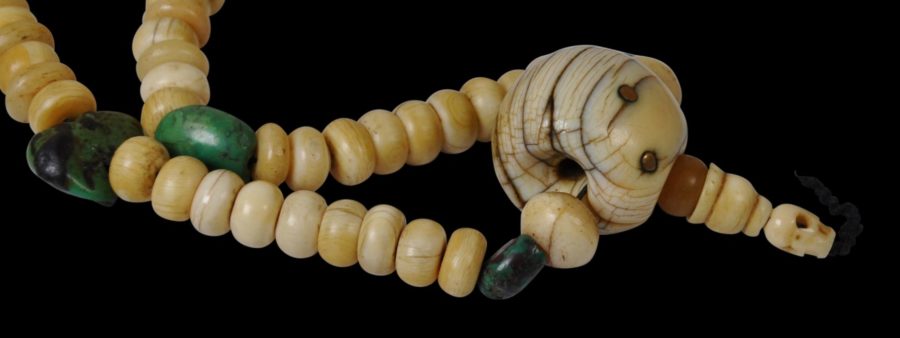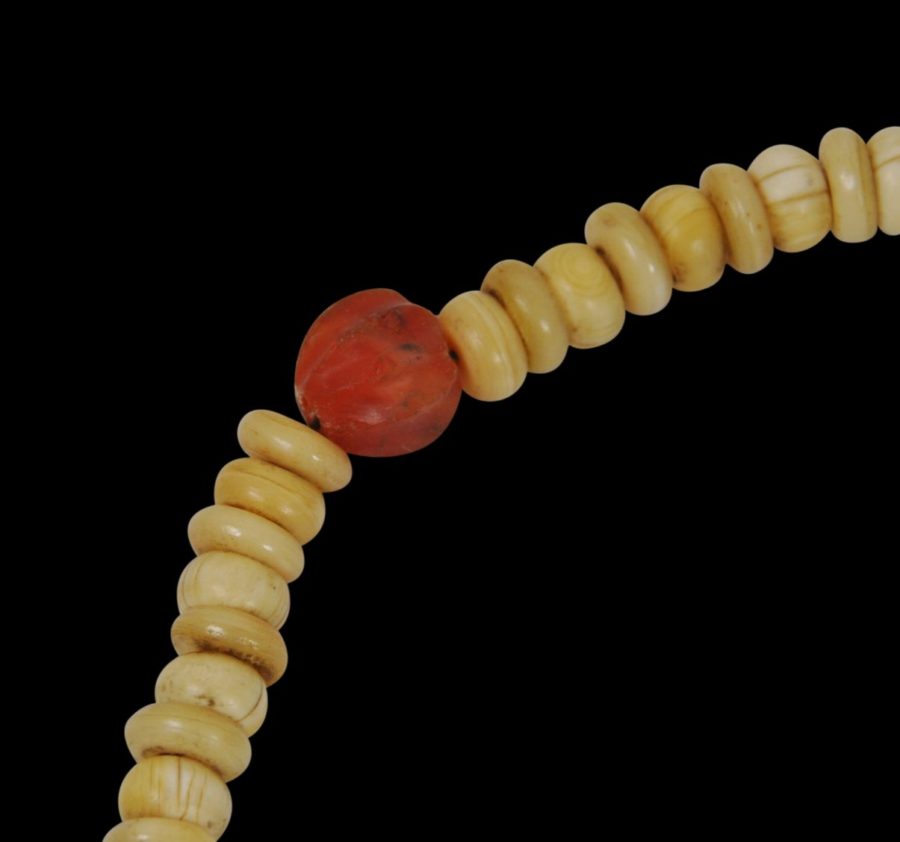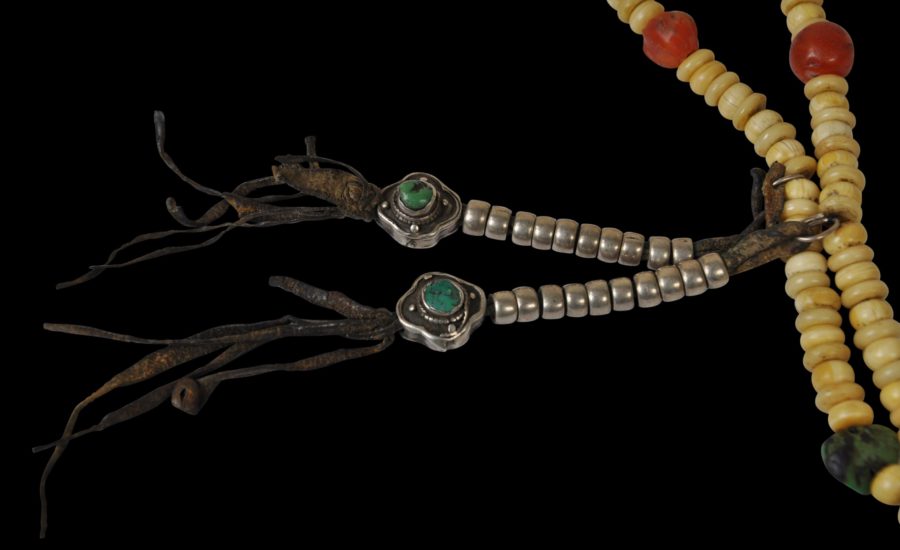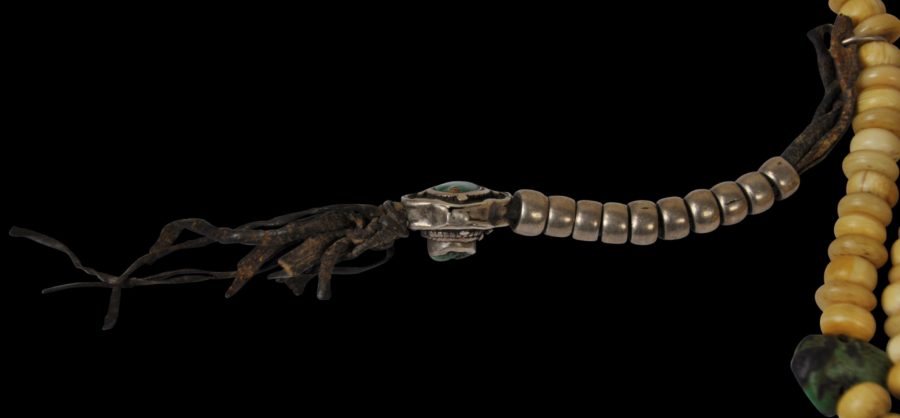This Buddhist rosary (sin-‘phen) is of exceptional quality. The patina from age and handling is incontrovertible.
The rosary comprises a superb, large spherical ivory bead decorated or pierced with four copper or brass rivets; many flattened spherical cream coloured beads of human bone; four turquoise cabochon beads; two orange agate or carnelian beads one of which is gadrooned (these almost certainly are early trade beads from India); silver beads; a small bead from human bone shaped as a human skull; and two fine finial beads of silver shaped as stylised dorjes and inset on each side with a turquoise cabochon in a silver box setting. These and the other silver beads are threaded together on thin leather straps.
The two bone beads and single agate bead at the bottom of the large central ivory bead probably are intended to symbolise the Buddhist trinity – the dharma, the Buddha, and the monkhood (sangha).
The two groups of ten silver beads are intended to serve as counters.
Buddhist rosaries evolved from ancient Hindu-Indian mala prayer beads. In Tibet, they were used by both laymen and monks. They are supposed to comprise 108 beads plus others as counters, although sectarian variants might have as many as 111 beads plus counters. The main prayer beads were used to count repetitions of prayers and the counters were used to record multiples of the main beads, so that thousands of repetitions could be counted.
Tibetan rosary beads made of ivory and human bone are relatively rare.
The set here is in a very fine, stable and wearable condition. Each element is smooth from wear, and handling. The ivory and bone beads all have a beautiful, deep creamy patina.
References
Reynolds, V., Tibet: A Lost World: The Newark Museum Collection of Tibetan Art and Ethnology, The American Federation of Arts, 1978.
Sherr Dubin, L., The Worldwide History of Beads, Thames & Hudson, 2009.
Untracht, O., Traditional Jewelry of India, Thames & Hudson, 1997.


